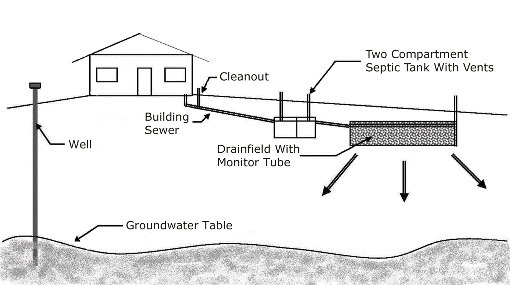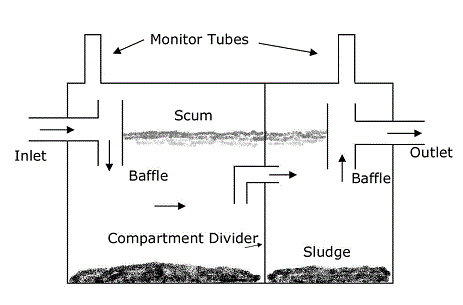How to Maintain Your Septic System
Protecting your investment...
If you own a home in Alaska, chances are that you own a septic system. A septic system is an effective method for treating household wastewater. In addition, it is cost effective and easy to maintain. Well built systems can last 20 years or more when properly maintained. Septic system failures are a major source of groundwater pollution. Layers of soil act as a natural filter, removing microbes and other particles as water seeps through. Improperly treated water can carry bacteria and viruses that can cause gastroenteritis, fever, common cold, respiratory infections and hepatitis. Septic system maintenance is like automobile maintenance; a little effort on a regular basis can save you a lot of money and significantly prolong the life of the system.

Do's And Don'ts
Don’t treat an on-site wastewater treatment system as if it were a normal centralized sewer system (Items flushed down the toilet don’t disappear).
Don’t flush household wastes such as: coffee grinds, kitty litter, cigarette butts, disposable diapers, fat, grease or oil, flushable wipes, nasal tissues, paper towels, feminine hygiene products
Don’t flush hazardous chemicals, such as: paints, paint thinners, medications, pesticides, varnishes, waste oils
Don’t build driveways, storage buildings or other structures over the septic tank or drainfield.
Do divert rainwater coming from driveways and roofs from drainfields. Flooding of the drainfield with excessive water will keep the soil from naturally cleaning the wastewater, leading to groundwater pollution.
Do use water wisely by fixing leaking faucets and toilets, install low-flow devices, take shorter showers and shallower baths, and wash only full loads of dishes and laundry to help reduce the wastewater volume the system must treat. The more wastewater you produce, the more your tank and drainfield must treat. Continuous saturation can affect the quality of the soil and its ability to naturally remove toxins, bacteria, and viruses from the water.
Do maintain a grass cover over drainfield area.
Do use household cleaning materials in moderation. They seldom affect the operation of a septic system when used in moderation.
Do leave stand pipes extending at least 24” above the surface. If you must cut them down be sure to measure and mark their location on a drawing of your system so they may be located for pumping maintenance in the future.
Don't wait until you have a problem - Pump Regularly! If the buildup of solids, sludge, in the tank becomes too high, solids move to the drainfield and can clog and strain the system to the point where a new drainfield will be needed. DEC recommends pumping every 2 years. If you have a garbage disposal, hot tub, or whirlpool you should increase the pumping frequency to once a year.
Don’t add chemical or biological additives to your septic tank. Because of the cold soil temperatures typically found in Alaska, adding performance enhancing additives like yeast, bacteria or chemicals to your septic tank is of little value. In fact, in some cases, these additives can be harmful to your system or the environment. Because of this, DEC recommends NOT using additives and instead have your septic tank pumped every 2 years.
What to look for when buying a home with a septic system

 Indicates an external site.
Indicates an external site.